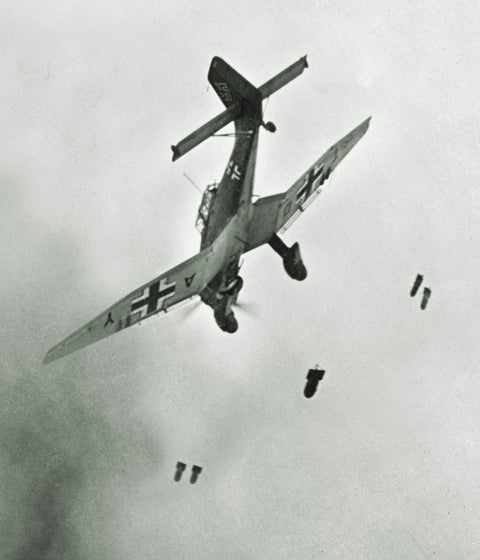
This German Dive-Bomber Terrified the Brits in 1940. What Made the ‘Jericho Trumpet’ So Frightening?
Britain, 1940. From the skies you hear a piercing siren, a terror-inducing wail—the “Jericho Trumpet”—which you have come to learn can mean only one thing: an attack by a Junkers Ju-87, a German dive-bomber best known as a Stuka.
The Stuka was used to great effect in Germany’s Blitzkrieg campaigns just after the onset of World War II. The first mass-produced variant, the Ju-87B, targeted ground troops, tanks, jeeps, and ships—along with bridges, railroads, and other infrastructure—in Poland and the Low Countries before making its mark in the Battle of Britain. On July 4, 1940, in one day, Stuka attacks sank four British destroyers and HMS Foylebank , killing 176.
The Stuka’s devilishly effective MO was to descend at a roughly 80-degree dive, the Jericho Trumpet its tell-tale calling card, while delivering up to 1,000 pounds of ordnance with deadly precision. Two problems: the Jericho Trumpet caused significant drag that slowed the plane, plus the descent was so steep that pilots could be temporarily incapacitated or pass out from powerful g-forces when they pulled up. To address the latter, German engineers introduced dive brakes, which automatically leveled the plane at the end of a bombing run.
The Stuka’s relatively slow airspeed and limited maneuverability—especially at the end of a dive—made it vulnerable to counterattack. After the Royal Air Force shot down nearly five dozen Stukas in 1940, the Luftwaffe realized the Ju-87 was not a viable weapon in the fight for Britain and reassigned it for duty on the Eastern Front and in the Mediterranean and North Africa.
